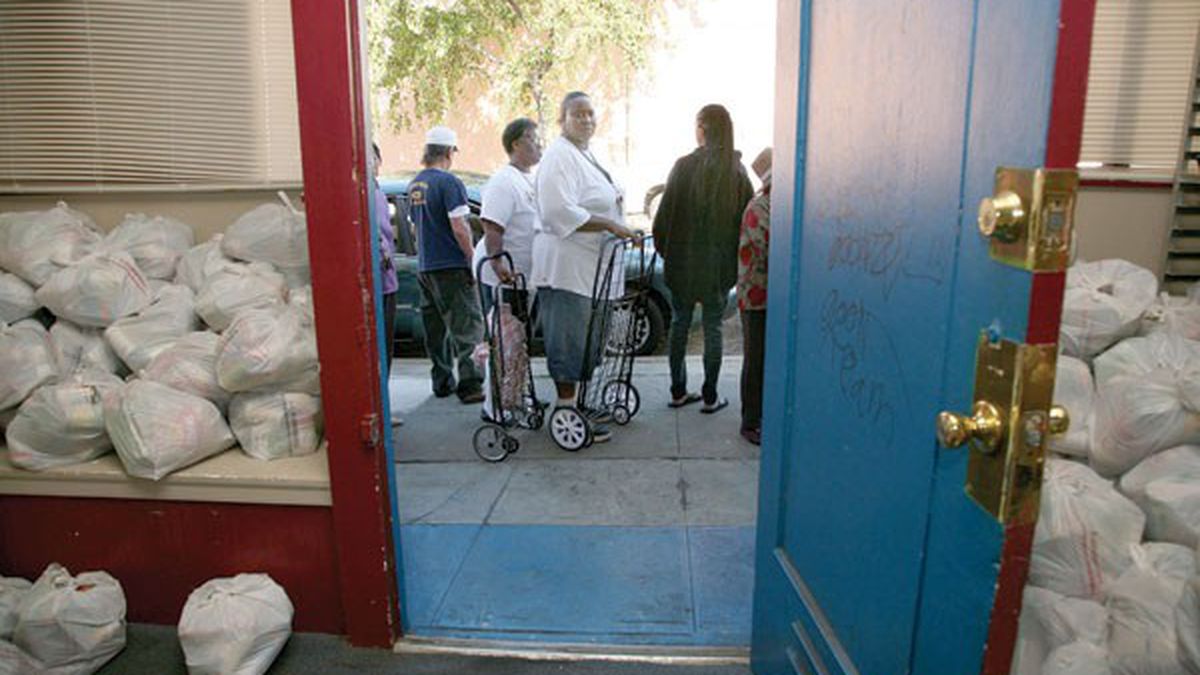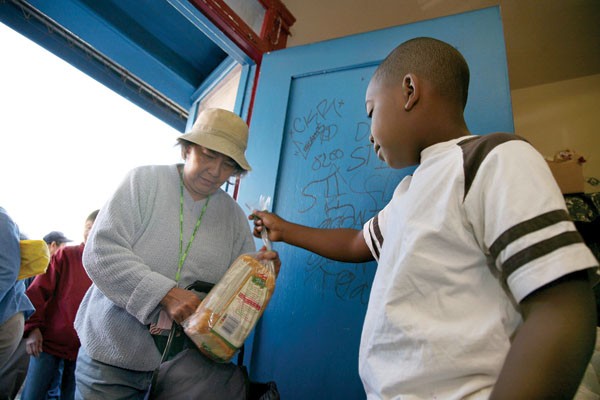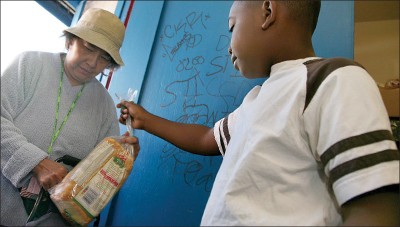Everyone knows that Oakland is diverse. Probably more people from more races and nationalities live in the city than anywhere west of New York or north of Los Angeles. But before we celebrate diversity, think of its most diverse places. Some of them are surely the lines of hungry people lining up for food.
Oakland has many food pantries — programs run primarily by churches on a shoestring. Church elders are often found at the Alameda County Community Food Bank’s huge warehouse out by the airport, buying as much food as they can for as little money as possible. They worry that the bags of cans and produce they distribute will run out before everyone in line gets one.
Reverend Lee from the Cornerstone Baptist Church, a food bank stalwart, fills the small storefront off MacArthur Boulevard with white plastic bags of cans, dried goods, and bread. Then the people come. Mostly Chinese-American and African-American families get their food from the African-American activists from his church.
On the other side of the airport, in a park by the freeway sound wall next to the 98th Avenue exit, a very diverse group of Asian, black, Latino, and white folks bag up fruits and vegetables. Early in the morning, families of primarily Mexican immigrants arrive to get numbers and wait. After the big food bank truck unloads and the baggers begin work, Columbian Gardens breathes a sigh of relief as people once again have food for the coming week.
The early morning also is the arrival time for the Good Samaritan food pantry in the neighborhood of East Oakland some folks call New Chinatown. Older Chinese women line up their shopping carts and sit or stand on the sidewalk across the street from a small, ramshackle house filled with food. Then, joined by African Americans and Latinos, they trade numbers for bags, and patiently surround huge cardboard bins of lettuce, cucumbers, and pears.
Later this year, the Food Bank will publish a study that will estimate the size and depth of Alameda County’s hungry population. We already know some of the figures. A third of the people in hungry families are younger than eighteen, and a quarter are older than 50. With Oakland’s official unemployment rate well over 10 percent, and the unofficial rate well over that, fewer than one quarter of food-pantry clients get most of their income from a job, although probably most work.
We’ll learn more when that report comes out. But a look at the people in line tells you the basic facts. Oakland has thousands of families who don’t have enough to eat. They come in all races and nationalities. And so do the people who care enough to help them find the food they need to survive.


























